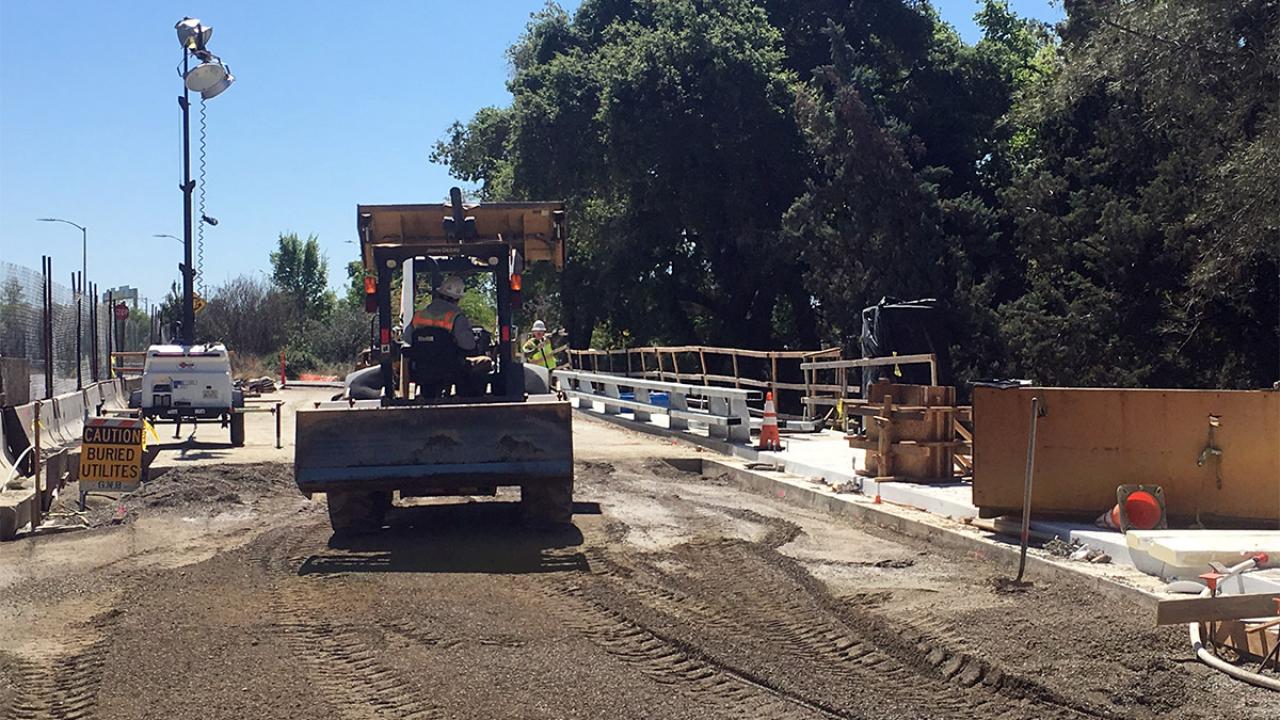After more than 14 months of construction during which traffic both northbound and southbound has been using the same side of the La Rue Road bridge, there’s about to be a switch to the other side — the new side, the first half of the replacement span across the Arboretum Waterway.
Construction has been underway since February 2019, and continues even now, under exemptions in the county and state stay-at-home orders. The old bridge, 70 years old and only 32 feet wide, is giving way to a 52-foot-wide span with 8-foot-wide bike lanes and 6-foot-wide sidewalks, welcome additions to this major north-south route in the campus interior.
The project began with demolition of the west half of the two-lane bridge in February 2019. Then, while the contractor built the new west half, all traffic used the east half of the bridge. The new west half, due for completion any day now, will carry all the traffic while the contractor tears down and replaces the east half.
Kurt Wengler, senior project manager for Design and Construction Management, said the project is due for completion by the start of fall quarter. That’s several months later than planned, partly due to unforeseen circumstances involving flora and fauna.
Extra work during one delay saved a tree, Wengler said, after the construction crew came across unexpected roots. The contractor used vacuum excavation to gently uncover the roots, then collaborated with campus arborists to decide which roots could be trimmed away without damaging the tree.
The team also took steps to protect shallow roots under a new path below the bridge, using a special fabric to mitigate potential damage from foot traffic.
Fauna can be even more unpredictable. “The biggest delay the team faced came on the wings of a black phoebe that decided to nest under the old bridge — in the middle of the construction zone,” Wengler said. “The bird swept into an existing nest and laid her eggs before we knew what hit us.”
The black phoebe (Sayornis nigricans) is protected by the Migratory Bird Treaty Act, which makes it illegal to take, capture or carry a protected bird, its nest or its eggs. This meant construction had to be halted until the hatchlings left the nest, which took five weeks.
Sienna Mata, assistant writer in Finance, Operations and Administration communications office, contributed to this report.
